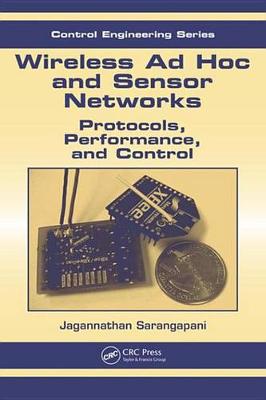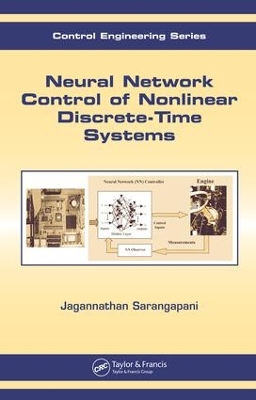Automation and Control Engineering
3 total works
With modern communication networks continuing to grow in traffic, size, complexity, and variety, control systems are critical to ensure quality and effectively manage network traffic. Providing a thorough and authoritative introduction, Wireless Ad hoc and Sensor Networks: Protocols, Performance, and Control examines the theory, architectures, and technologies needed to implement quality of service (QoS) in a wide variety of communication networks.
Based on years of research and practical experience, this book examines the technical concepts underlying the design, implementation, research, and invention of both wired and wireless networks. The author builds a strong understanding of general concepts and common principles while also exploring issues that are specific to wired, cellular, wireless ad hoc, and sensor networks. Beginning with an overview of networks and QoS control, he systematically explores timely areas such as Lyapunov analysis, congestion control of high-speed networks, admission control based on hybrid system theory, distributed power control of various network types, link state routing using QoS parameters, and predictive congestion control. The book also provides a framework for implementing QoS control using mote hardware.
Providing a deeply detailed yet conveniently practical guide to QoS implementation, Wireless Ad hoc and Sensor Networks: Protocols, Performance, and Control is the perfect introduction for anyone new to the field as well as an ideal reference guide for seasoned network practitioners.
Optimal Networked Control Systems with MATLAB
by Jagannathan Sarangapani and Hao Xu
Optimal Networked Control Systems with MATLAB (R) discusses optimal controller design in discrete time for networked control systems (NCS). The authors apply several powerful modern control techniques in discrete time to the design of intelligent controllers for such NCS. Detailed derivations, rigorous stability proofs, computer simulation examples, and downloadable MATLAB (R) codes are included for each case.
The book begins by providing background on NCS, networked imperfections, dynamical systems, stability theory, and stochastic optimal adaptive controllers in discrete time for linear and nonlinear systems. It lays the foundation for reinforcement learning-based optimal adaptive controller use for finite and infinite horizons. The text then:
- Introduces quantization effects for linear and nonlinear NCS, describing the design of stochastic adaptive controllers for a class of linear and nonlinear systems
- Presents two-player zero-sum game-theoretic formulation for linear systems in input-output form enclosed by a communication network
- Addresses the stochastic optimal control of nonlinear NCS by using neuro dynamic programming
- Explores stochastic optimal design for nonlinear two-player zero-sum games under communication constraints
- Treats an event-sampled distributed NCS to minimize transmission of state and control signals within the feedback loop via the communication network
- Covers distributed joint optimal network scheduling and control design for wireless NCS, as well as the effect of network protocols on the wireless NCS controller design
An ideal reference for graduate students, university researchers, and practicing engineers, Optimal Networked Control Systems with MATLAB (R) instills a solid understanding of neural network controllers and how to build them.
Neural Network Control of Nonlinear Discrete-Time Systems
by Jagannathan Sarangapani
Intelligent systems are a hallmark of modern feedback control systems. But as these systems mature, we have come to expect higher levels of performance in speed and accuracy in the face of severe nonlinearities, disturbances, unforeseen dynamics, and unstructured uncertainties. Artificial neural networks offer a combination of adaptability, parallel processing, and learning capabilities that outperform other intelligent control methods in more complex systems.
Borrowing from Biology
Examining neurocontroller design in discrete-time for the first time, Neural Network Control of Nonlinear Discrete-Time Systems presents powerful modern control techniques based on the parallelism and adaptive capabilities of biological nervous systems. At every step, the author derives rigorous stability proofs and presents simulation examples to demonstrate the concepts.
Progressive Development
After an introduction to neural networks, dynamical systems, control of nonlinear systems, and feedback linearization, the book builds systematically from actuator nonlinearities and strict feedback in nonlinear systems to nonstrict feedback, system identification, model reference adaptive control, and novel optimal control using the Hamilton-Jacobi-Bellman formulation. The author concludes by developing a framework for implementing intelligent control in actual industrial systems using embedded hardware.
Neural Network Control of Nonlinear Discrete-Time Systems fosters an understanding of neural network controllers and explains how to build them using detailed derivations, stability analysis, and computer simulations.


